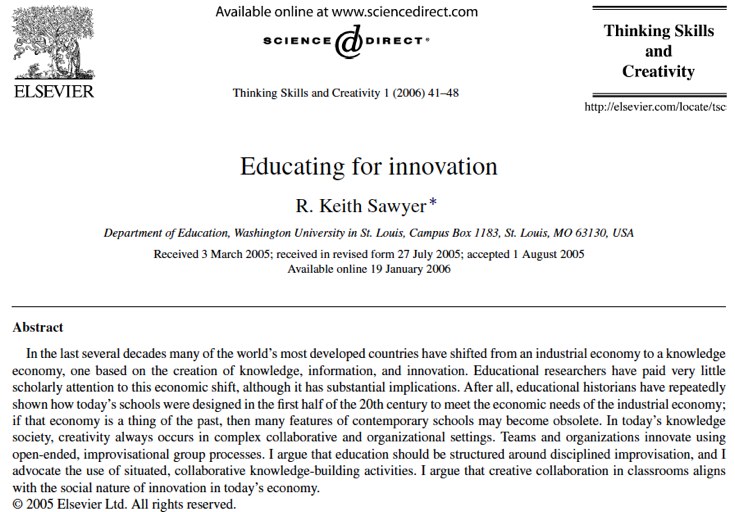It seems like the perfect storm has been approaching in regards to creativity & innovation education. Two major articles have hit the news. The first is a Fast Company article about an IBM study that identified creativity as the most important leadership skill for the future, a skill we need to cultivate in a wide variety of individuals. Next, Newsweek had an important article entitled “The Creativity Crisis†about how research is showing that American creativity is declining. More specifically the article highlights that creativity scores are dropping for American students. Creativity is one of America’s core competencies so this is concerning news. There is an increasing need and passion to improve education so that students develop the important leadership skill of creativity…and because there are important challenges at hand in our society, action is needed. Creativity in action is innovation. I am more passionate than ever about innovation education and wanting to do something about it at the widespread national level. I believe this is critical for our society.
A journal article that shares a unique approach that I have resonance with is that from R. Keith Sawyer about “Educating for Innovation.†I resonate with what Sawyer writes: “I argue that education should be structured around disciplined improvisation, and I advocate the use of situated, collaborative knowledge-building activities.†I have found that guiding collaborative groups step-by-step and activity-by-activity through a structured process works for helping people achieve creative and innovative gains. A big dream of mine is that exponentially more students will graduate college knowing the basic steps and activities of innovation…being equipped with an actual process to create, develop, test, and launch new ideas. How cool. We are a long ways away from this since innovation is rarely a formal part of a college curriculum. I do believe that high school students and even elementary students can learn how to be more creative and disciplined with idea development.

Sawyer also writes of how innovation happens in the real world: “teams and organizations innovate using open-ended, improvisational group processes.†I agree more and more that a key skill to learn for an innovator, especially those innovators in organizations, is improvisation. Improvisation in groups is taking the training field by storm. I have seen an emergence of articles about employees developing this skill within themselves and in groups. It could be valuable to develop this competency in younger students as well through giving them the tools, techniques, and activities to improvise and show them the connection it has to real work, especially collaborative or adaptive leadership they may be engaging in. I have generated my creative energy lately into helping people learn how to communicate their ideas memorably and publicly. Improvisation is a critical skill for doing this in front of groups. My background is in leadership development with specific emphasis the last five years on facilitating and developing those leadership skills of creativity, idea generation & development, and ultimately innovation. The more I read and am aware to what is happening in our rapidly changing society, the more I want to be involved in helping to foster learning of these important and necessary life and leadership skills.